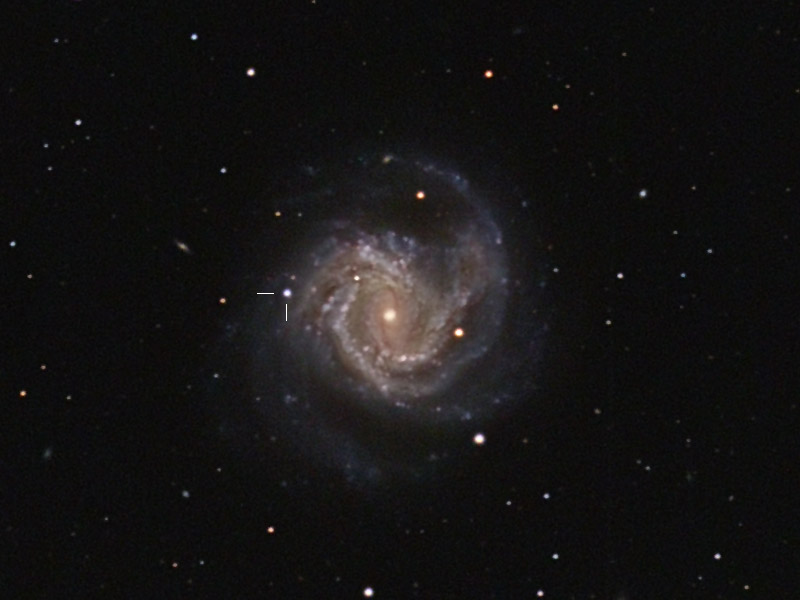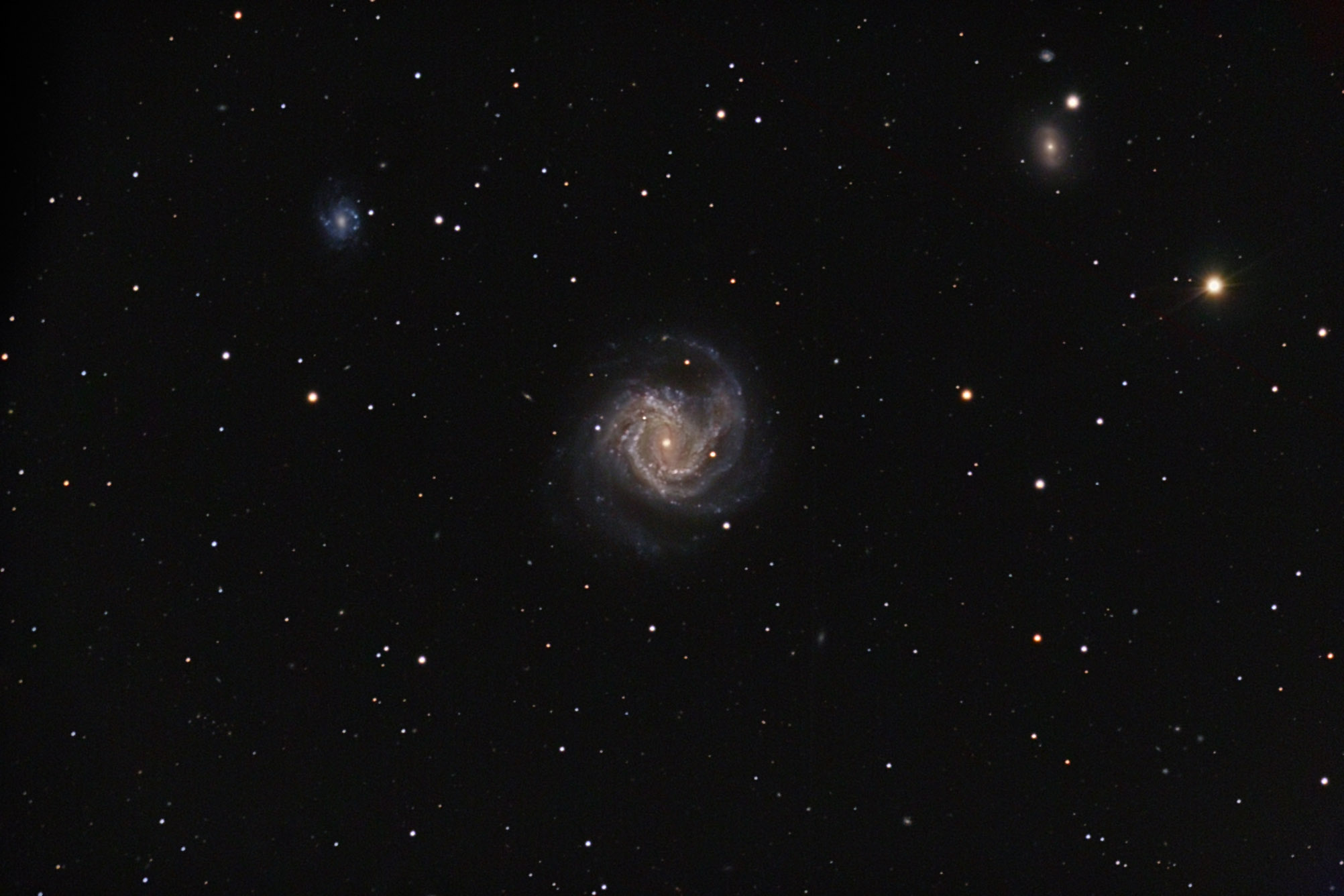| Description | Images |
Object name: M061Designation(s): M061, NGC4292, NGC4292A, NGC4303, M61 is another galaxy in the Virgo Cluster. Distance estimates vary from a bit under 50 million to a bit over 60 million light-years. It is one of the more southern members of the group so actually is in Virgo, many are in Coma Berenices. NED classifies it as SAB(rs)bc;HII Sy2 though some sources don't agree with the Seyfert 2 classification saying it is a weak AGN instead. This galaxy has been a hotbed of supernovas with 7 seen since 1926 and 6 of those since 1961. Japanese astronomer Koichi Itagaki discovered the last two in 2008 and 2014. This image was taken on January 5, 2009. Itagaki discovered SN 2008in on December 26 so it was still bright when I took this image. It reached magnitude 14.3. When I took it I measured it at 14.9 in my red filter and 14.5 in the blue filter. Unfortunately, the night was poor so details in the galaxy are lost to poor seeing and poor transparency. This galaxy has had at least 7 supernova since 1926; SN 1926A, SN 1961I, SN 1964F, SN 1999gn, SN 2006ov, SN 2008in and SN 2014dt. It would seem this is a galaxy for SN hunters to check often. Related Designation(s):2MASS J12211646+0435446, 2MASS J12215492+0428257, 2MASX J12211648+0435444, 2MASX J12215494+0428249, 2XMM J122154.8+042825, 2XMMp J122154.8+042823, 87GB 121922.1+044508, 87GB[BWE91] 1219+0445, AKARI J1221553+042826, ASK 692551.0, CGCG 042-040, CGCG 042-045, CGCG 1218.7+0452, CGCG 1219.3+0445, CXO J122154.94+042825.9, EVCC 0404, EVCC 0429, GALEXASC J122116.40+043544.4 , GALEXMSC J122116.40+043543.9 , HDCE 0720 NED037, HDCE 0720 NED043, HIPASS J1221+04, HIR J1221+0429, HOLM 375A, HOLM 379A, IRAS 12194+0444, IRAS F12193+0445, LDCE 0904 NED058, LDCE 0904 NED064, LGG 281:[G93] 015, LGG 287:[G93] 002, LQAC 185+004 008, M061, MAPS-NGP O_556_0519846, MCG +01-32-016, MCG +01-32-022, MESSIER 061, MG1 J122151+0428, MRC 1219+047, NEWPS_5yr_5s 279, NEWPS_5yr_5s_15 270, NGC 4292, NGC 4292A, NGC 4303, NGC 4303:[L2011a] X0001, NGC 4303:[LB2005] X01, NGC 4303:[THJ2000] 10, NGC4292, NGC4292A, NGC4303, NPM1G +04.0344, NSA 124480, NSA 141222, NVGRC J122154.9+042825, NVSS J122154+042825, PGC 039922, PGC 040001, PMN J1221+0428, RX J1221.9+0429, SDSS J122116.45+043544.5, SDSS J122154.92+042825.6, SSTSL2 J122154.90+042824.6, UGC 07404, UGC 07420, USGC U490 NED310, USGC U490 NED319, UZC J122116.5+043544, UZC J122155.0+042824, VCC 0462, VCC 0508, WVFS J1222+0430, WVFSCC J122156+042740, [AHG2014] B175, [BEC2010] HRS 114, [M98j] 174 NED48, [M98j] 174 NED53, [MHH96] J122155+042904, [RHM2006] SFGs 077, [VCV2001] J122154.9+042825, [VCV2006] J122154.9+042825, [WB92] 1219+0445, |

